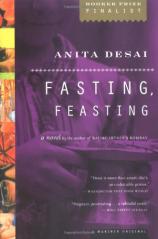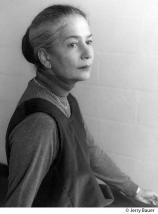Reading Group Guide
Discussion Questions
Fasting, Feasting

1. In what ways do the two terms of the title—"fasting" and "feasting"—apply to family life and society in general in India and the United States?
2. What kinds of freedom and what specific freedoms do the characters seek? In what ways is the "total freedom of anonymity" that Arun experiences in his university dormitory similar to the freedom that Uma seeks?
3. What is the significance of Uma's experiences at, on, and in the sacred river? What does Desai mean when she writes of Uma's near-drowning (in chapter nine), "The saving was what made her shudder and cry ..."? What mysteries and "golden promises" does Uma seek within the convent school, with Mira-masi, and in her Christmas-card collection?
4. In what ways does spirituality enter the novel? What characters have authentic spiritual leanings or capacities? Are Uma's seizures, for example, instances of spiritual possession or eruptions of suppressed frustration and rage?
5. What roles and expectations are open to women and men in the India and America of Fasting, Feasting? What do the details of Anamika's and Aruna's marriages reveal about women's lives in traditional India?
6. What rebellions and attempts at escape, successful or not, occur? How do they suggest the significance of Uma's vision of escape as "a huge and ancient banyan tree" and a river? (131)
7. Arun "ponders these omens and indicators" of life in Massachusetts—the objects that adorn the interiors and exteriors of the houses. What do these "omens and indicators" reveal to Arun and to us as his summer stay with the Potters proceeds?
8. What differences and similarities are there between the Indian and American families, between corresponding members of the two families (for example, Mama and Mrs. Potter), and between the their communities?
9. "I've always been aware of food as an obsession," Desai has said. What function does food play in the novel? How does food provide both "focus and continuity" in both societies?
10. What instances and images of imprisonment and entrapment occur in the novel's two parts? To what extent is entrapment of one kind or another envisioned as an inescapable fact of life?
11. What are the purposes of the various rituals, ceremonies, traditions, and routines—personal, social, and religious—that are observed in the novel's two parts? What are the consequences of ignoring tradition and custom and of disrupting established routine?
12. Arun takes up jogging, having recognized the American joggers' struggle "to free themselves and find, through endeavor most primitive, through strain and suffering, that open space, that unfettered vacuum where the undiscovered America still lies ..." Why does Arun partake of this American struggle?
13. How does Desai establish Mama and Papa's identities as separate persons and, at the same time, as the single, and singular, MamandPapa? In what ways do "they have the comfort of each other," as Uma later realizes?
Fasting, Feasting
- Publication Date: January 3, 2000
- Paperback: 228 pages
- Publisher: Mariner Books
- ISBN-10: 0618065822
- ISBN-13: 9780618065820








